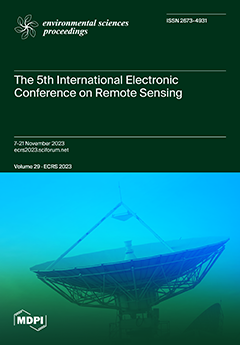Ensuring food security in precision agriculture demands early prediction of corn yield in the USA at international, regional, and local levels. Accurate corn yield estimation can play a crucial role in averting famine by offering insights into food availability during the growing season.
[...] Read more.
Ensuring food security in precision agriculture demands early prediction of corn yield in the USA at international, regional, and local levels. Accurate corn yield estimation can play a crucial role in averting famine by offering insights into food availability during the growing season. To address this, we propose a Concatenate-based 2D-CNN-BILSTM model that integrates Sentinel-1, Sentinel-2, and Soil GRIDS (global gridded soil information) data for corn yield estimation in Iowa State from 2018 to 2021. This approach utilizes Sentinel-2 features, including spectral bands (Blue, Green, Red, Red Edge 1/2/3, NIR, n-NIR, and SWIR 1/2), and vegetation indices (NDVI, LSWI, DVI, RVI, WDRVI, SAVI, VARIGREEN, and GNDVI), alongside Sentinel 1 features (VV, VH, difference VV, and VH, and RVI), and soil data (Silt, Clay, Sand, CEC, and pH) as initial inputs. To extract high-level features from this data each month, a dedicated 2D-CNN was designed. This 2D-CNN concatenates high-level features from the previous month with low-level features of the subsequent month, serving as input features for the model. Additionally, to incorporate single-time soil data features, another 2D-CNN was implemented. Finally, high-level features from soil, Sentinel-1, and Sentinel-2 data were concatenated and fed into a BILSTM layer for accurate corn yield prediction. Comparative analysis against random forest (RF), Concatenate-based 2D-CNN, and 2D-CNN models, using metrics like RMSE, MAE, MAPE, and the Index of Agreement, revealed the superiority of our model. It achieved an Index of Agreement of 84.67% with an RMSE of 0.698 t/ha. The Concatenate-based 2D-CNN model also performed well with an RMSE of 0.799 t/ha and an Index of Agreement of 72.71%. The 2D-CNN model followed closely with an RMSE of 0.834 t/ha and an Index of Agreement of 69.90%. In contrast, the RF model lagged with an RMSE of 1.073 t/ha and an Index of Agreement of 69.60%. Integration of Sentinel 1–2 and Soil-GRIDs data with the Concatenate-based 2D-CNN-BILSTM model significantly improved accuracy. Combining soil data with Sentinel 1–2 features reduced the RMSE by 16 kg and increased the Index of Agreement by 2.59%. This study highlighted the potential of advanced machine learning (ML)/deep learning (DL) models in achieving precise and reliable predictions, which could support sustainable agricultural practices and food-security initiatives.
Full article



